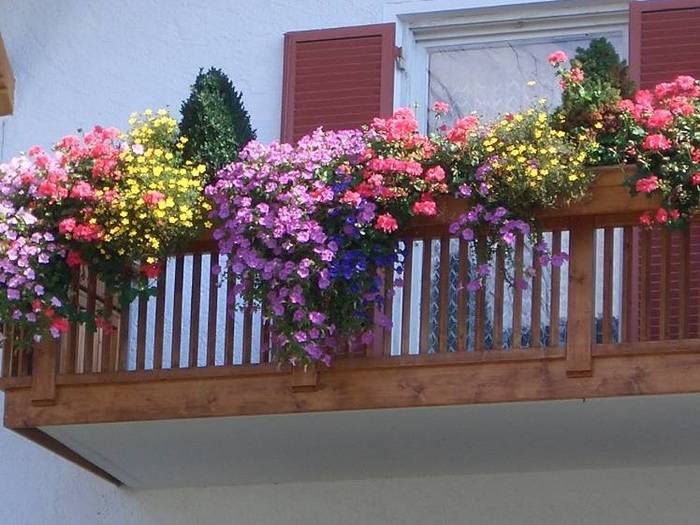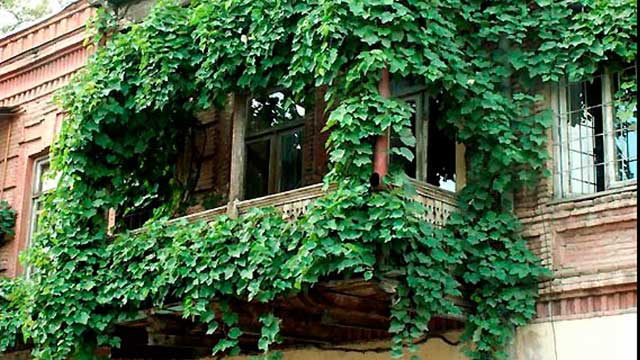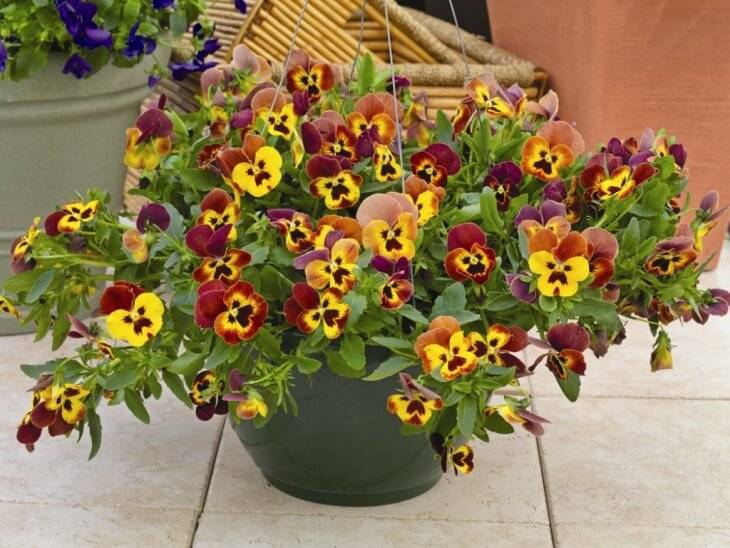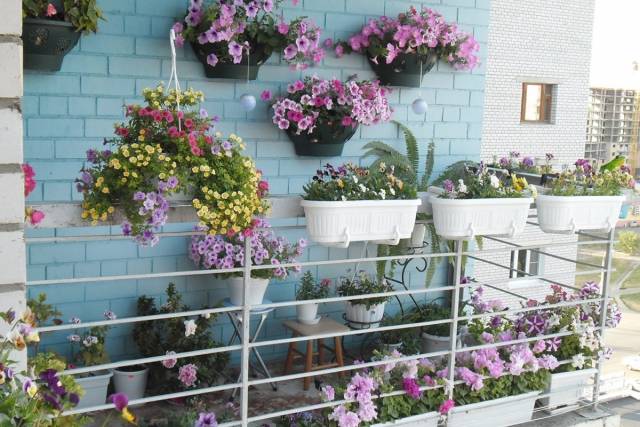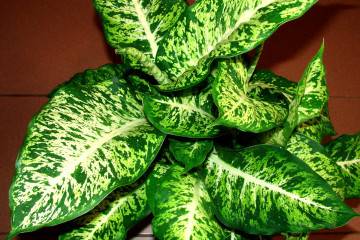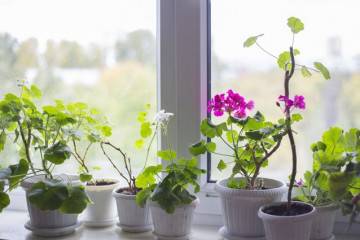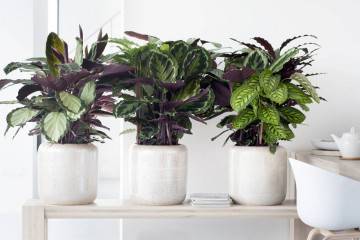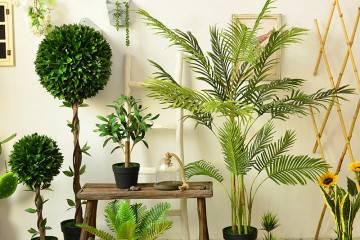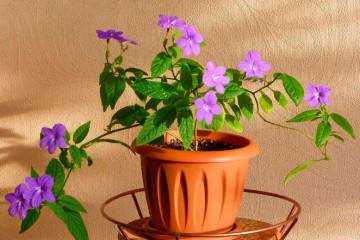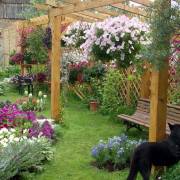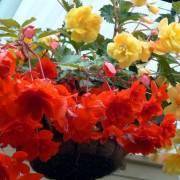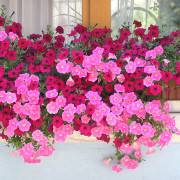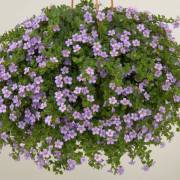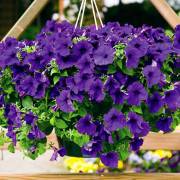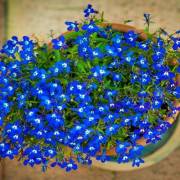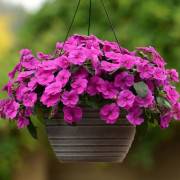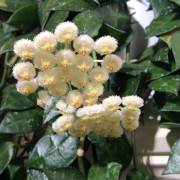Ampel plants for home and balcony
Content:
Decorative flowers are the best decoration for an apartment. Many flower growers strive to grow ampelous indoor plants. They grow and curl easily, many of them are able to purify the air.
Ampel indoor plants
Indoor ampelous flowers are very diverse. They differ from each other in the shape of the flower and leaves, the color of the petals, and the length of the branches. The name of this plant species comes from the French word ampel, which means "hanging vase of flowers." They can be grown in hanging pots, planters, shelves and racks. Thanks to good support, these flowers will curl along the wall or hang down. As a rule, such plants bloom for a long time, some of them all year round.
Ampel plants for home
All indoor ampelous plants climb easily or spread over a hard surface. Climbing dwarf plants for the home are very different from each other in appearance and in terms of care. Among them there are both light-loving and shade-loving. Some tolerate a short drought well, while others need an abundance of moisture. The grower must monitor the condition of the plants and check why they are not blooming or withering. With good care, ampelous flowers will delight the owner for many years.
Types of indoor ampel flowers
Indoor ampelous flowers are of three types:
- Blooming. This type includes bacopa, viola, achimenes, jasmine, wax ivy, etc.
- Ornamental deciduous - plants with beautiful leaves and dwarf trees for the home (for example, ficus). Plants such as ivy, maidenhair, roicissus, asparagus, nephrolepis, etc. are very popular.
- Succulents are very delicate and vulnerable plants. Very whimsical, in need of careful handling and good care. The most beautiful representatives are Schlumbergera, Ceropegia, Ripsalis, Mesembirantemum cordial, Rowley's Ragwort, Morgana, and whip-like disocactus.
Ampel flowers for the balcony
You can decorate the balcony with live decorative flowers. Ampel plants for the balcony differ in a variety of species. They grow rapidly and wrap around balconies, terraces, walls, and other stationary objects.
How to grow ivy on the balcony
Ivy on the balcony is one of the most popular ampelous houseplants. This unpretentious liana quickly puts down tenacious roots, so it easily wraps around trees, shrubs, walls and ceilings. The ivy-covered terrace looks very elegant. Common ivy has wide leaves, the shape of which can vary depending on the variety. The length of leathery leaves is almost always about 10 cm. They can be green or light green in color. At the edges, the leaves are sometimes framed with a white border. The variety Glacier is widespread as an ampelous plant.
Ivy is a light-loving plant. It needs to be watered and sprayed daily with water from a spray bottle, and sometimes the leaves should be rinsed under the shower. In the summer, the soil in the pot should be constantly moist; in the winter, the frequency of watering and spraying should be reduced. Ivy winters well at temperatures up to + 12 ° C, but it must be kept in a bright room.
Between March and August, ivy needs to be fed every 2 weeks.Complex fertilizers are used, this plant is especially fond of mullein infusion. Branches must be pinched periodically.
Many growers strive to grow ivy on the balcony. How to grow:
- Cut healthy young cuttings from the bush. Hold them for 2-3 hours in water with a growth stimulant dissolved in it.
- Prepare the substrate and root the cuttings in the ground. It is advisable to cover them with a plastic bottle or bag.
- In addition, ivy reproduces rapidly by layering. The plant is able to do this on its own: the shoot comes into contact with the ground and after a while takes root.
For the prevention of diseases, ivy must be treated with carbofos and fungicides. Sick shoots need to be cut off. Once every 2 years, the plant must be transplanted into a larger pot.
Ampel tomatoes: growing on the balcony
Ornamental ampelous tomatoes can be grown in hanging pots. Growing them on the balcony not only decorates, but also provides the grower with delicious vegetables.
Small varieties of tomatoes are suitable for growing on a terrace or balcony:
- Cherry has red fruits 40-60 g.
- Cascade F1 Red - red fruits.
- Cascade F1 Elo - yellow.
- The city dweller will delight you with delicious fruits of red-raspberry color.
- Red Abundance - A prolific variety suitable for canning.
- The garden pearl has fruits weighing 20 g, which can be salted and pickled.
- Mascot. Its fruits weighing 40–80 g ripen in July.
Ampel tomatoes can be planted as early as March.
Planting and leaving:
- Soak the seeds for 1 hour in a solution of potassium permanganate. Then rinse with clean water.
- Prepare the soil from humus, turf and peat. Take the components in equal proportions. Add ash and potassium-phosphorus fertilizers. Mix thoroughly and loosen.
- Place the seeds in the ground to a depth of 2-3 cm. Sprinkle with warm water.
- When 2-3 leaves appear on each sprout, the seedlings are transplanted into a permanent box or hanging pot with a volume of 10 liters. Expanded clay is poured at the bottom, the layer thickness should be 2-3 cm.
- Tomatoes should be watered and fed regularly. Very little fertilization is required.
Ampel tomatoes are almost not susceptible to disease. The crop can be harvested in the first half of summer.
Bacopa on the balcony
Ampel Bacopa (Sutera) is a climbing plant that can bloom from March to October. The homeland of this flower is the southern part of Africa. In home floriculture, it began to be used relatively recently, but quickly gained popularity due to its beauty and unpretentiousness. Bacopa has long branches (30–70 cm), on which small green or olive leaves are arranged in symmetrical pairs. The branches grow many small flowers up to 2 cm in diameter. Each of them consists of 5 petals of white, blue, pink or lilac color. Breeders have bred Bacopa varieties with large and double flowers.
How to grow:
- Expanded clay is placed at the bottom of the pot. For the soil, you will need 2 parts of humus and one part of peat, sand and leafy earth. The acidity level should be low.
- In late February or early March, the seeds are placed on wet ground, lightly pressed and sprayed with water. You do not need to cover it with earth.
- The seed pot is covered with plastic wrap or a plastic bottle. You can cover it with glass or put it in a bag.
- The substrate needs to be watered frequently to keep it moist at all times. The greenhouse should be placed in a warm, sunny place and kept at a temperature of 20-23 ° C.
- After 10-14 days, shoots will appear, then the greenhouse is removed and the plant is left open.
- When the seedlings grow 2 leaves, a pick is carried out: they are transplanted into pots with a volume of 2x2 cm.Then they are fed with mineral fertilizer. Required temperature 22-26 ° C.
- The grown flowers dive a second time. 2-4 cuttings are planted in one pot.They are fed with nitrogen-phosphorus fertilizer.
- Pinch the top of each plant, which has reached 10 cm in height, so that the side branches grow better.
- The temperature regime changes: during the day 15-23 ° C, at night 13-15 ° C.
- When the weather is warm, the bacopa can be displayed on the balcony.
Bacopa needs abundant watering: the soil in the pot must always be moist. This flower is shade-tolerant, so it can grow both in bright light and in the shade. But due to the lack of lighting, the flowers of the bacopa become smaller and paler. It is necessary to fertilize it with complex fertilizers every 10 days.
This plant can only bloom for 1 year, and then the bush needs to be divided and young cuttings planted in new pots. In late autumn, the shoots are cut off. The youngest and strongest branches should be used as propagation cuttings. The cuttings should be stored in a warm room.
Viola ampelous on the balcony
Viola (pansies, garden violet) are incredibly beautiful flowers with a yellow core, which are surrounded by thin strokes that look like eyelashes. The shape of the petals makes viola flowers look like multi-colored butterflies. Petals can be white, lilac, blue, yellow, black, blue.
Viola ampelous on the balcony is the dream of many flower growers. This is a very light-loving plant, so it is better to grow it on an open balcony, and not on a glazed loggia.
How to grow:
- You will need a hanging basket, flowerpot or flowerpot with a long leg. There should be a drainage hole at the bottom of the container.
- A thick (2-3 cm) layer of expanded clay is poured onto the bottom. Above - loose earth.
- Seedlings are planted at a distance of 10-15 cm from each other. After 14 days, it should be fed with a complex mineral fertilizer.
When the viola takes root, it will have to be fertilized every week. It is necessary to water the plant often and abundantly, but avoid stagnation of moisture and rotting of the roots. If, due to the heat, the branches and flowers of the viola wither, then it must be cut off, leaving 5–6 cm from each shoot.
What indoor plants can be kept at home
Lovers of home flowers are eager to find out which indoor plants can be kept at home. Many of them have beneficial properties, so they have a beneficial effect on health and well-being.
Ampel plants for the home, which are good for health to grow:
- ficus;
- tradescantia;
- callisia ("golden mustache");
- bell;
- hoya (wax ivy);
- chlorophytum;
- myrtle;
- peppermint;
- asparagus;
- chamedorea;
- fern;
- rosemary.
What indoor flowers can not be kept at home
Any florist needs to remember which indoor flowers cannot be kept at home. Poisonous plants have no place in the house, especially if children or pets live in it. All poisonous flowers give off toxic fumes that can cause poisoning. It is not necessary to grow begonia and plants from the aroid and kutrov family in an apartment.
Ampel plants will decorate any apartment, even the most ordinary-looking one. It is easy to care for them, so many amateur flower growers grow them with great pleasure.
